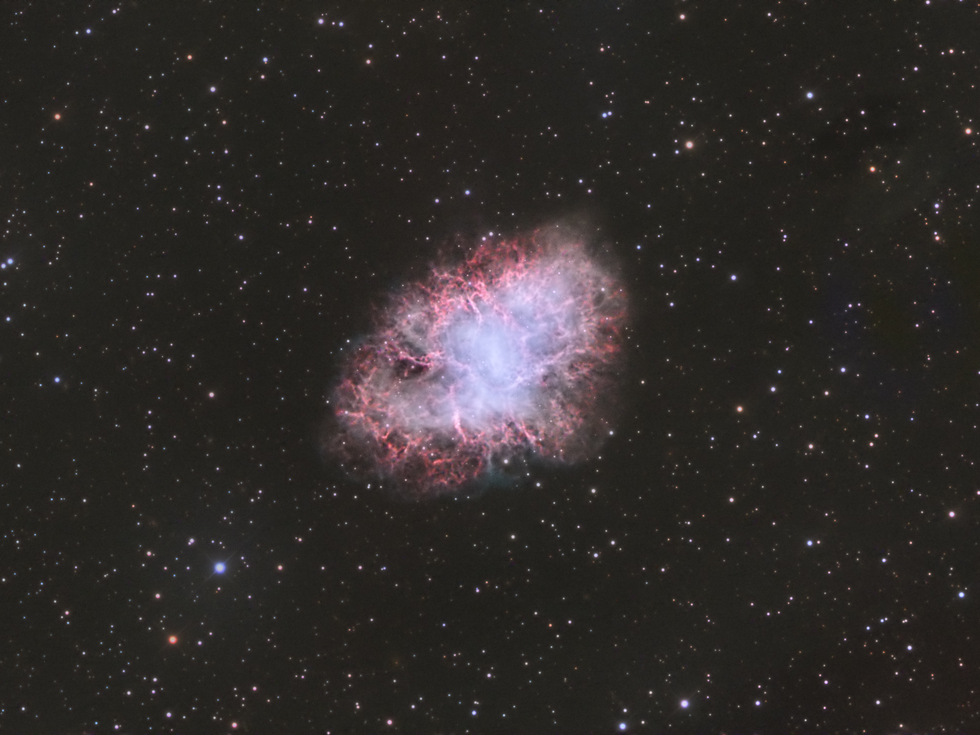Crab Nebula LRGB
Crab Nebula LRGB
Messier 1 a.k.a Crab Nebula
The Crab Nebula was officially discovered in the 18th century by the English astronomer John Bevis, later studied by Charles Messier, who introduced it to the catalog that bears his name.
This nebula/supernova remnant is about 6500 light-years from Earth and can be seen in the constellation Taurus. It should also be mentioned that the apparent diameter of this nebula is slightly larger than 10 light years and that the shock wave caused by the final explosion still has its effect, pushing the remains into space at a speed of almost 1000 miles / second and thus changing constantly the shape and size of this deep sky object.
The Crab Nebula was officially discovered in the 18th century by the English astronomer John Bevis, later studied by Charles Messier, who introduced it to the catalog that bears his name.
This nebula/supernova remnant is about 6500 light-years from Earth and can be seen in the constellation Taurus. It should also be mentioned that the apparent diameter of this nebula is slightly larger than 10 light years and that the shock wave caused by the final explosion still has its effect, pushing the remains into space at a speed of almost 1000 miles / second and thus changing constantly the shape and size of this deep sky object.
SPECIFICATIONS
Telescope
Officina Stellare ProRC 700
Camera
QHY 600M Pro
Location
Spain
Date of observation
Oct 2023
Filters
Astrodon LRGB
Processing
Pixinsight
Credits
Telescope Live


